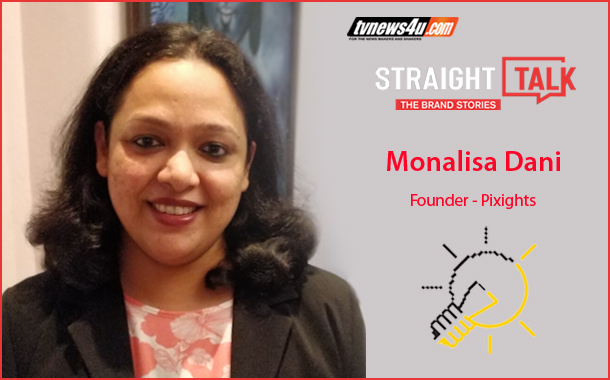By Swaminathan Balasubramainan
Pixights, a primary research firm which does research in the media field like OTT platforms, TV channels believes that qualitative research for every programme is as equal to that of the quantitative ones. The firm is founded by Monalisa Dani and Sumeet Saxena who complement each other as they are experts in their respective area of Quantitative and Qualitative research. Speaking to TVNews4U, Monalisa shares the research methods she adopts for qualitative research.
Edited Excerpts.
While the whole television industry is driven by numbers, what research methods are you using to get the best of insights on the shows or new launches?

The industry is driven by numbers since that is what gets in the revenue. However, research before the numbers actually come into play, such as content cues studies, evaluations of new concepts or new shows, new tracks in current shows, setting up early warning systems and tracking methods for shows helps in pre-empting the numbers and often helps in taking corrective measures as well. Post the numbers coming up, diagnostic researches and health checks help in maintenance and sustenance of shows
What challenges did you face initially to convince the clients to use your research methods?
People have been used to reading numbers in a certain way or through filters that have been there for a long time. Hence, the biggest barrier to switching to new methods and filters is simply inertia. That was the biggest challenge we faced wherein though people were convinced of the robustness and efficiency of our methods over older methods, the actual change took quite a while to initiate .

Apart from that, the challenge was also internal – to innovate and create methods and infrastructure for an industry that is so dynamic that content changes daily, hence needed to create cost efficient methods that would be easy to deliver within short time windows
Can you talk about any innovative new methods/researches that you have brought into the TV industry?
In 2017, PIXIGHTS has pioneered a path breaking digital offering called SHEEVI – an app designed specifically to help track campaign efficacy. It combines the power of audio content recognition technology and the rigor of market research. This allows real-time campaign health check making early intervention possible.
In 2018, we conducted a syndicated research on the OTT viewers in India – Mapping Viewing Behaviour and Drivers of Content – a one of its kind pan India research across 10 cities purely from the viewer perspective.
You were one of the first ones to bring about ways in which research could enable creatives as well – can you share some of the tools you have used?

The first method that we pioneered is Local Tadka – our content cues package that enables creatives to pick up local nuances in character prototypes, location cues as well as setting cues before designing a show. This was the first time research was used in a structured manner to create content rather than evaluate it. We have done about 21 such exercises across channels using this tool in the last 5 years
We have conducted 6 Trendspotting researches in the last 6 years to enable creatives to come up with story ideas using current social, cultural and technological trends in the country. PIXIGHTs research on Trendspotting for Movie Content with Disney UTV Motion Pictures was nominated as best of India by ESOMAR.
Is there a difference in how research is used in the entertainment industry in India and how it is used elsewhere?

Research in the entertainment industry in India is largely evaluative and post facto – does this work or not work? How can we make it work? In comparison, there is a lot of research in the Western world that is done before a show is created. In fact if we take the Netflix example, Netflix not only looks at millions of ratings, searches and ‘plays’ a day, but the entire viewing history of billions of hours of content streamed per month. They collected enough data over six years to actually design a show that turned out to be a huge success – House of Cards. So, content creation today is not only about good creative ideas but also artificial intelligence led research that enables delivery of exactly what the consumer wants.

Also, in India, we still use standard demographic descriptions such as age, gender, socio economic classification, life-stage to define the viewer of a channel and content is tailored to what this demographic is thought to desire. However, today TV channels as well as OTT giants outside India are using the vast amounts of subscriber bases for viewing habits and preferences to create viewer segments. This has started happening in India as well now with Big Data Analytics being a part of all the bigger channels but we still have miles to go on the same.
What are your future plans ahead?
We continue to look at developing more data and research products for the media industry. We are looking at incorporating technology and big data into our methodologies to help us insight better. We have successfully used technology as part of some of our recent researches to capture high quality, transactional data to draw insights. This marriage of technology and proven research methodologies is what we are most excited about.

















